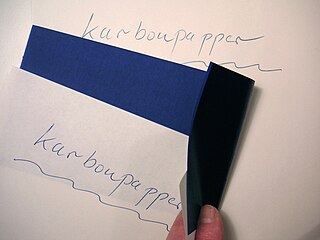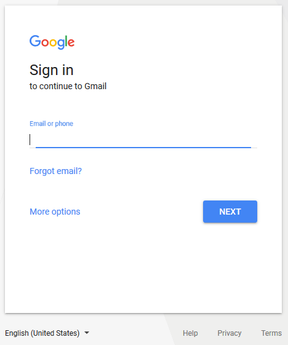
Electronic mail is a method of transmitting and receiving messages using electronic devices. It was conceived in the late–20th century as the digital version of, or counterpart to, mail. Email is a ubiquitous and very widely used communication medium; in current use, an email address is often treated as a basic and necessary part of many processes in business, commerce, government, education, entertainment, and other spheres of daily life in most countries.
The Simple Mail Transfer Protocol (SMTP) is an Internet standard communication protocol for electronic mail transmission. Mail servers and other message transfer agents use SMTP to send and receive mail messages. User-level email clients typically use SMTP only for sending messages to a mail server for relaying, and typically submit outgoing email to the mail server on port 587 or 465 per RFC 8314. For retrieving messages, IMAP is standard, but proprietary servers also often implement proprietary protocols, e.g., Exchange ActiveSync.

An email client, email reader or, more formally, message user agent (MUA) or mail user agent is a computer program used to access and manage a user's email.
A mailing list is a collection of names and addresses used by an individual or an organization to send material to multiple recipients. The term is often extended to include the people subscribed to such a list, so the group of subscribers is referred to as "the mailing list", or simply "the list".

Before the development of photographic copiers, a carbon copy was the under-copy of a typed or written document placed over carbon paper and the under-copy sheet itself. When copies of business letters were so produced, it was customary to use the acronym "CC" or "cc" before a colon and below the writer's signature to inform the principal recipient that carbon copies had been made and distributed to the parties listed after the colon. With the advent of word processors and e-mail, "cc" is used as a merely formal indication of the distribution of letters to secondary recipients.

An Internet forum, or message board, is an online discussion site where people can hold conversations in the form of posted messages. They differ from chat rooms in that messages are often longer than one line of text, and are at least temporarily archived. Also, depending on the access level of a user or the forum set-up, a posted message might need to be approved by a moderator before it becomes publicly visible.
Various anti-spam techniques are used to prevent email spam.
When a message is replied to in e-mail, Internet forums, or Usenet, the original can often be included, or "quoted", in a variety of different posting styles.
A bounce message or just "bounce" is an automated message from an email system, informing the sender of a previous message that the message has not been delivered. The original message is said to have "bounced".
Email spoofing is the creation of email messages with a forged sender address. The term applies to email purporting to be from an address which is not actually the sender's; mail sent in reply to that address may bounce or be delivered to an unrelated party whose identity has been faked. Disposable email address or "masked" email is a different topic, providing a masked email address that is not the user's normal address, which is not disclosed, but forwards mail sent to it to the user's real address.
A challenge–response system is a type of that automatically sends a reply with a challenge to the (alleged) sender of an incoming e-mail. It was originally designed in 1997 by Stan Weatherby, and was called Email Verification. In this reply, the purported sender is asked to perform some action to assure delivery of the original message, which would otherwise not be delivered. The action to perform typically takes relatively little effort to do once, but great effort to perform in large numbers. This effectively filters out spammers. Challenge–response systems only need to send challenges to unknown senders. Senders that have previously performed the challenging action, or who have previously been sent e-mail(s) to, would be automatically

Conversation threading is a feature used by many email clients, bulletin boards, newsgroups, and Internet forums in which the software aids the user by visually grouping messages with their replies. These groups are called a conversation, topic thread, or simply a thread. A discussion forum, e-mail client or news client is said to have a "conversation view", "threaded topics" or a "threaded mode" if messages can be grouped in this manner. An email thread is also sometimes called an email chain.

Mix networks are routing protocols that create hard-to-trace communications by using a chain of proxy servers known as mixes which take in messages from multiple senders, shuffle them, and send them back out in random order to the next destination. This breaks the link between the source of the request and the destination, making it harder for eavesdroppers to trace end-to-end communications. Furthermore, mixes only know the node that it immediately received the message from, and the immediate destination to send the shuffled messages to, making the network resistant to malicious mix nodes.
Domain-based Message Authentication, Reporting and Conformance (DMARC) is an email authentication protocol. It is designed to give email domain owners the ability to protect their domain from unauthorized use, commonly known as email spoofing. The purpose and primary outcome of implementing DMARC is to protect a domain from being used in business email compromise attacks, phishing email, email scams and other cyber threat activities.
Email forwarding generically refers to the operation of re-sending a previously delivered email to an email address to one or more different email addresses.
An email alias is simply a forwarding email address. The term alias expansion is sometimes used to indicate a specific mode of email forwarding, thereby implying a more generic meaning of the term email alias as an address that is forwarded in a simplistic fashion.
A mailbox is the destination to which electronic mail messages are delivered. It is the equivalent of a letter box in the postal system.

The Gmail interface makes Gmail unique amongst webmail systems for several reasons. Most evident to users are its search-oriented features and means of managing e-mail in a "conversation view" that is similar to an Internet forum.
With the invention of online message-transfer methods like email, an array of anti-spam techniques has been developed in regard to email spam. Email spam refers to the unwarranted inundation of unsolicited bulk emails. These are methods created on the client arrangement of a situation, rather than the server-side.






